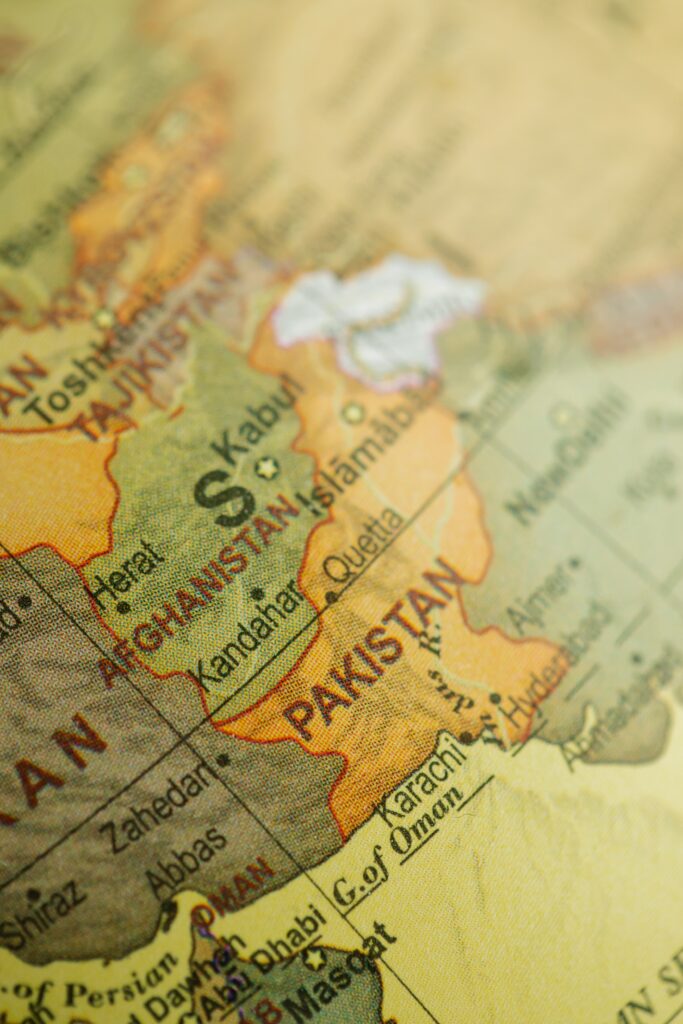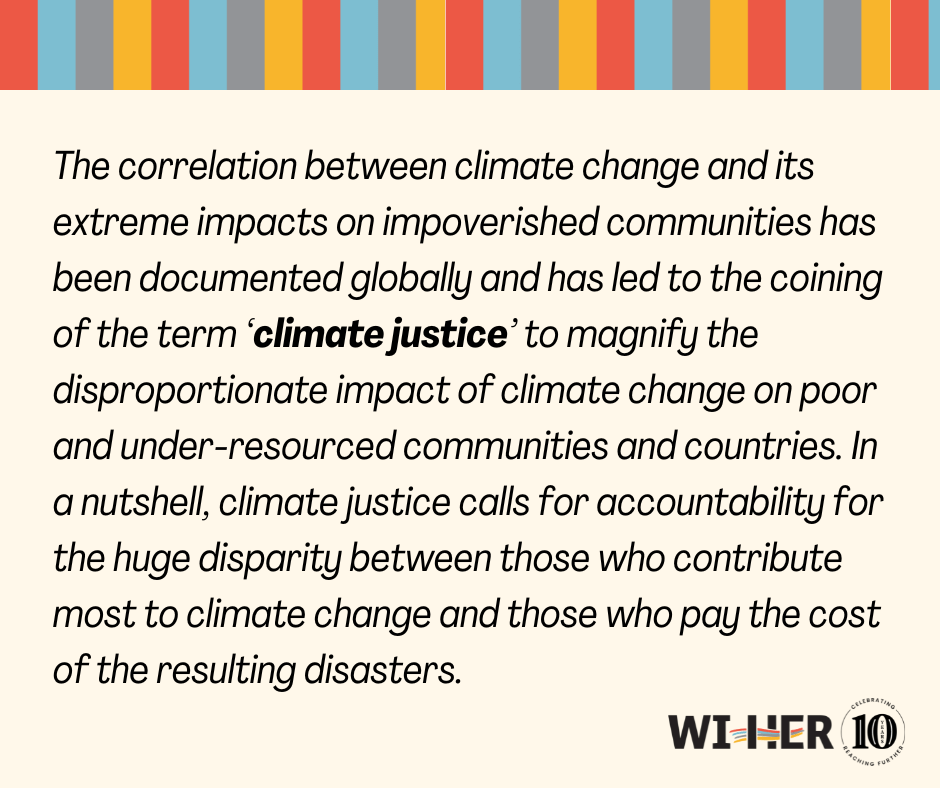Can Climate Change be Addressed without Climate Justice? Pakistan: A Case Study
By Fatima Saeed, WI-HER Senior Program Manager, West Africa

Pakistan is one of the top ten countries impacted by climate change globally. Its unique topography and socioeconomic makeup render it the perfect microcosm for understanding the linkages between climate change, climate justice, and the existing global economic and political order.
The country has experienced more than 150 extreme weather events between 1999 and 2018. Recent manifestations of climate change-induced disasters in Pakistan include record rainfalls across the country due to the El Nina phenomenon in 2022, rapid melting of more than 7,000 glaciers in the country’s north due to rising temperatures, and erratic weather patterns leading to extreme heat spells in recent years.
The economic, social, and humanitarian fall-out from climate change-induced disasters has been intense. In the most recent 2022 floods alone, the country suffered economic losses of $12.5 billion. For instance, conservative estimates suggest more than 3.6 million acres of crops have been destroyed and 750,000 livestock lost, and 32 million people have been displaced. Moreover, women and children bear the brunt of the impact of violence against women, human trafficking, and child marriages, all of which is expected to surge as a result of climate-induced disasters. Reports of violence against the marginalized trans community and denial of aid are surfacing as this already-impoverished community struggles to survive as the flood waters recede. Needless to say, the floods have hit the most marginalized and low-income communities the hardest.
The correlation between climate change and its extreme impacts on impoverished communities has been documented globally and has led to the coining of the term ‘climate justice’ to magnify the disproportionate impact of climate change on poor and under-resourced communities and countries. In a nutshell, climate justice calls for accountability for the huge disparity between those who contribute most to climate change and those who pay the cost of the resulting disasters.

Pakistan, for instance, produces less than one percent of the world’s emissions but is in the top ten countries impacted by climate change. While the international community has responded to calls for humanitarian aid to help flood-impacted populations and respond to climate change, the contributions made by countries such as the United States and China, the two largest producers of the world’s carbon emissions, are paltry compared to what is required to help the most marginalized communities in Pakistan get back on their feet and do so in a climate-resilient manner. Not only do these contributions fail to meet the immediate and long-term developmental needs of Pakistan, but they also fail to address the structural global economic and political inequities at the heart of the climate crises.
Operationalizing climate justice requires that these and other large carbon emitting countries provide climate reparations to countries like Pakistan, which bear the brunt of climate-induced disasters. These reparations can take the form of cancellation of the country’s foreign debt; increased, subsidized, and free-of-cost transfer of renewable energy and climate-friendly technologies, and a significant reduction in their own carbon emissions.
Without climate justice measures, countries like Pakistan will continue to be locked in a vicious cycle of disaster relief, recovery, and rehabilitation from climate-induced disasters and the most vulnerable and marginalized populations within these countries will disproportionately experience the fall-out from the lack of a collective global response to climate change. A climate justice-focused approach to climate change will mean that the most socio-economically disadvantaged communities in Pakistan and beyond are not just at the forefront of rehabilitation and response efforts but are also meaningfully engaged in tackling climate change, planning solutions, and implementing action plans to address climate change and climate justice.